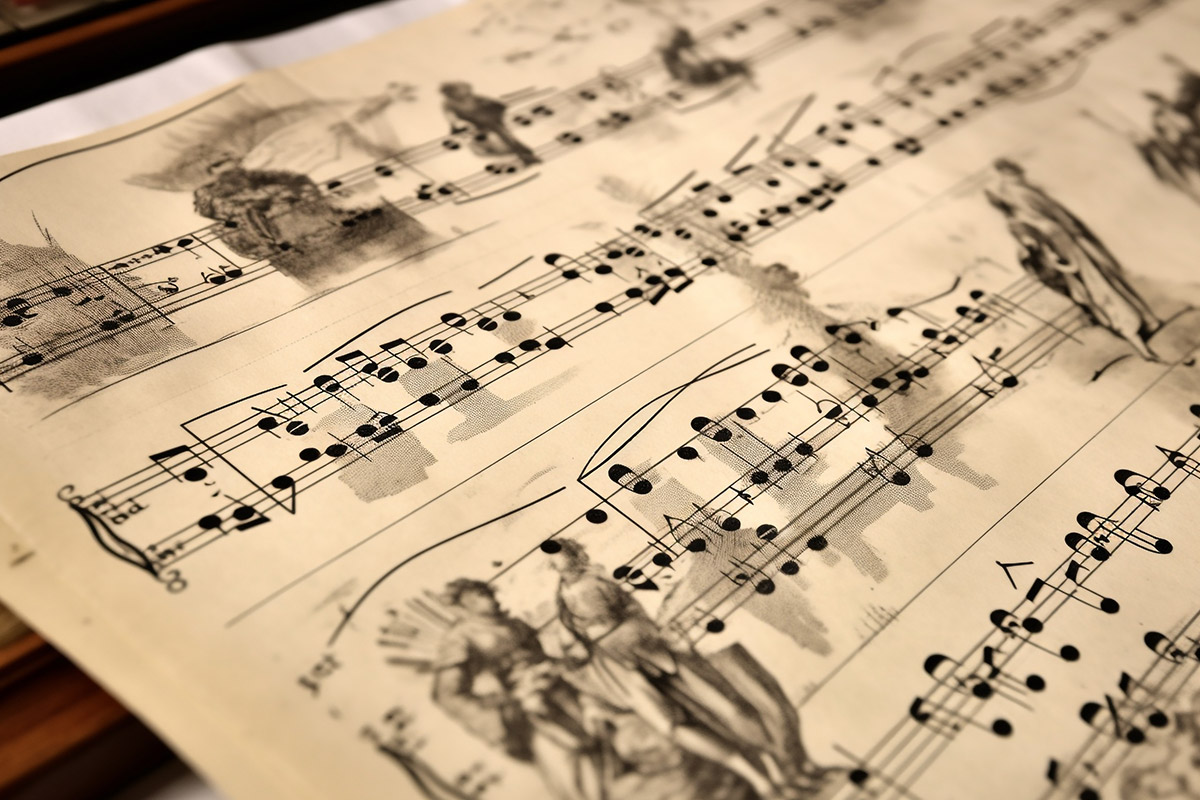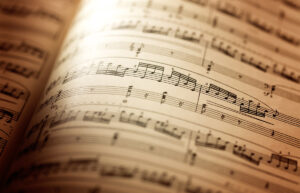What is a Triad in Music: Meaning, Types, Parts, Importance & More

Welcome to the musical world of triads! Imagine a triad as a secret combination lock in the symphony of sounds. This guide will answer and elaborate on the question – What is a triad in music? Just like puzzles waiting to be solved, triads, composed of three notes, weave the magic of harmony in music. Triads unlock the harmony that forms the backbone of your favorite melodies. Get ready to decode, explore, and create harmonies that resonate with the soul.
Welcome to TheDemoStop, now join the community!
Connect with artists, fans and producers around the world.
What is a triad in music?
In music theory, a triad is a chord consisting of three notes played simultaneously. These notes are typically stacked in intervals of a third, creating a harmonious blend. The fundamental structure of a triad comprises a root note, a third interval above the root (which can be major or minor), and a fifth interval above the root.
Uncovering what is a tirad in music serves as the building blocks of harmony and form the basis for more complex chords and musical compositions across various genres.
Why are triads important in music?
Triads, pivotal in music for constructing chords and harmonies, serve as the fundamental building blocks upon which chords are built, influencing the emotional impact and tonal character of a piece.
Triads establish the harmonic framework, allowing musicians to convey different moods, intensities, and textures within a composition. Whether in classical, jazz, pop, or other genres, the understanding and manipulation of triads enable musicians to create captivating and resonant musical experiences for listeners.
Types of triads in music
Major triads (1 3 5)
Major triads consist of a root note (the 1st degree of the scale), a major third interval (four half steps above the root), and a perfect fifth interval (seven half steps above the root). These triads create a bright, consonant, and often uplifting sound. They form the basis of many cheerful and optimistic melodies due to their stable and harmonious nature.
Minor triads (1 b3 5)
Minor triads comprise a root note, a minor third interval (three half steps above the root), and a perfect fifth interval. This configuration produces a more melancholic, introspective, or somber tone compared to major triads. They are fundamental in conveying emotions such as sadness, introspection, or mystery, commonly found in various genres, from classical compositions to popular music.
Diminished triads (1 b3 b5)
Diminished triads consist of a root note, a minor third interval, and a diminished fifth interval (six half steps above the root). These triads convey tension and instability due to the dissonant sound created by the diminished fifth. They are often used to create suspenseful or ominous atmospheres in music, adding a sense of unpredictability or unease to compositions.
Augmented triads (1 3 #5)
Augmented triads include a root note, a major third interval, and an augmented fifth interval (eight half steps above the root). These triads produce a unique, bright, and somewhat tense quality due to the augmented fifth, which creates an intriguing and often unresolved sound. Augmented triads are utilized to evoke feelings of ambiguity and uncertainty.
What are the 3 parts of the triad?
Root note
The root note is the foundational pitch upon which the entire triad is built. It serves as the primary note or tonic of the chord and provides the name for the chord itself. For instance, in a C major triad (C E G), the note C is the root note. This note establishes the tonal center and gives the chord its fundamental identity within the musical context.
Third
The third is the intervallic distance above the root note within the triad. It defines whether the triad is major or minor. A major triad contains a major third interval above the root (e.g., C to E in a C major chord), while a minor triad features a minor third interval above the root (e.g., C to E, in a C minor chord). The third significantly influences the chord’s emotional quality, contributing to its brightness or darkness.
Fifth
The fifth is the interval between the root note and the fifth degree of the scale within the triad. It establishes the chord‘s stability and contributes to its overall sound. In a typical triad, this is a perfect fifth interval, creating a stable and harmonious sound (e.g., C to G in a C minor chord). However, diminished triads have a diminished fifth, while augmented triads have an augmented fifth, altering the chord’s tension and character.
Triads in different musical contexts
Triads in classical music
In the realm of classical music, what is a triad in music becomes a crucial inquiry. Triads, serving as foundational elements in harmonic progressions and structural components within compositions, play a pivotal role. Composers extensively utilize triads to establish tonal centers, infuse harmonic richness, and convey a spectrum of emotions. These three-note wonders in major, minor, diminished, or augmented forms serve as building blocks for larger harmonic structures in classical compositions. Classical composers leverage triads to weave intricate chord progressions and melodies, forming the very basis of the classical harmonic language. This utilization allows them to craft musical depth, tension, resolution, and elaborate forms such as sonatas, symphonies, and concertos.
Triads in jazz music
In the realm of jazz, musicians harness triads as essential tools for improvisation, harmonic exploration, and reharmonization. Deciphering what is a triad in music makes musicians understand and use the fundamental three-note chords in jazz, employing them for improvisation, harmonic exploration, and reharmonization, resulting in the crafting of rich and complex harmonies. Musicians often experiment with different voicings and extensions, such as 7th, 9th, 11th, or 13th chords derived from triads, adding vibrant colors and sophistication to their harmonic palette. The synergy of triads with various jazz scales and modes forms the groundwork for improvisational language, enabling musicians to fluidly navigate chord changes, create melodic lines, and express themselves dynamically within the genre’s flexible harmonic framework.
Welcome to TheDemoStop, now join the community!
Connect with artists, fans and producers around the world.
Triads in folk music
In folk music traditions worldwide, triads play a fundamental role in creating simple yet evocative harmonic structures. Folk musicians often use triads in their basic forms (major and minor) to accompany melodies and tell stories through music. Triads in folk music are frequently played on traditional instruments like guitars, mandolins, or accordions, providing harmonic support to the melodies and creating a sense of familiarity and cultural identity within different folk traditions. They serve as accessible and integral components in the creation of folk tunes, ballads, and traditional songs, enriching the harmonic backdrop of these musical narratives.
Conclusion
What is a triad in music?
A triad in music is a chord made up of three notes played simultaneously, typically consisting of a root note, a third (which can be major or minor), and a fifth above the root. Triads form the basic building blocks of harmony in music.
Why are triads important in music?
Triads are crucial in music as they form the foundation of harmony, allowing musicians to create chords, establish tonality, and build melodies. Understanding triads is fundamental for composing, arranging, and conveying emotions within music.
Types of triads in music
- Major triads
- Minor triads
- Diminished triads
- Augmented triads
What are the 3 parts of the triad?
- Root note
- Third
- Fifth
Triads in different musical contexts
- Triads in classical music
- Triads in jazz music
- Triads in folk music
FAQs
What is a triad in music?
A triad in music is a three-note chord consisting of a root note, a third, and a fifth.
Why are triads important in music?
Triads are important in music as they form the basic structure of chords and harmonies, providing the foundation for melodies, tonality, and emotional expression.
What are the different types of triads in music?
- Major triads
- Minor triads
- Diminished triads
- Augmented triads
What are Major triads?
Major triads consist of three notes: the root, a major third interval above the root, and a perfect fifth interval above the root. They produce a bright, stable, and consonant sound in music.
What are Augmented triads?
Augmented triads are three-note chords consisting of a root, a major third interval above the root, and an augmented fifth interval above the root. They create a unique, tense, and unresolved sound in music.
What are the 3 parts of the triad?
- The Root note
- The Third
- The Fifth
What are the triads in different musical contexts?
- Triads in classical music: Triads serve as foundational elements for harmonic progressions, providing structure and richness to compositions in classical music.
- Triads in jazz music: Triads in jazz are expanded, altered, and combined with other chords, forming a basis for complex harmonies and improvisation within the genre.
- Triads in folk music: In folk traditions, triads (mainly major and minor) are used to accompany melodies, offering simple yet evocative harmonic support.































































